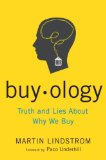‘Accident’ and the self
November 6, 2008
I recently read Accident: A Philosophical and Literary History by Ross Hamilton (University of Chicago Press, 2007), which surprisingly turned out to have a lot to do with changing concepts of the self in Western culture, from Aristotle to postmodernism. I had some difficulty following the argument in this densely woven academic text, so it was something of a relief to find my response echoed by Terry Eagleton’s review:
“But there are times when the subject threatens to disappear under this imposing weight of learning, only to re-emerge just when one thought it had sunk without trace. Hamilton does not keep a sharp enough eye on the storyline. There is a grand narrative struggling to get out of this study, which is the mysterious tale of the disappearing substance.”
Here is a quote from Hamilton’s conclusion that sort of sums up and perhaps gives a flavor of the book:
“we can point to shifts in the value assigned to aspects of accident that demarcate a series of important attitudinal domains: The reign of substance as the enduring quality with respect to accident lasted into the eighteenth century. During the late eighteenth and early nineteenth centuries, a shift occurred from seeking qualitative resemblances to the exploration of differences. Toward the end of the nineteenth century, a second shift replaced the retrospective sense of self with anticipatory self-structuring and gave primacy to inwardly determined self-definition. A third shift, one that began in the twentieth century and is accelerating rapidly, sacrificed the claim of a substantive self. According to critics like Foucault or Virilio, this movement threatens to extinguish the self completely.” (p. 301)
After the jump there are some notes from my reading… (more…)





